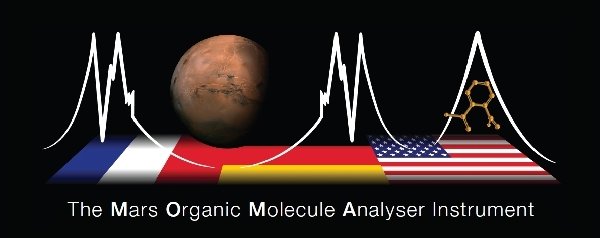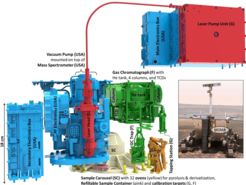
Mars Organic Molecule Analyser (MOMA)
MOMA - Mars Organic Molecule Analyser
MOMA is a joint European and US-American Instrument, combining gas-chromatography and laser desorption with a linear ion trap mass-spectrometer. The task is to answer questions of exo-biological relevance, especially about sources, evolution, and distribution of life in the universe.
Scientific Goals
The primary goal of MOMA is the detection and identification of organic material, especially refractory organic substances, on Mars. In case of success the question of biotic or abiotic origin of the material will be addressed with respect to molecular identification, chiral and isotopic composition. Together with the other analytical instruments of the payload the question of life on Mars will be addressed by MOMA’s two investigation methods, namely laser desorption mass spectrometry (LD-MS) and gas-chromatography mass spectrometry (GC-MS). In addition the new data will widen our understanding of planet Mars as a whole.
The Instrument
MOMA offers the opportunity of investigation of rock and soil samples of Mars in two different ways. In the first operational mode ground sample material will be delivered to a MOMA oven. About thirty single use ovens are mounted on a carousel. The filled oven will be positioned in the ‘Tapping Station’, sealed and electrically contacted. Heating the oven up to 800°C caused all volatile compounds to go into the gas phase. This gas phase is transported to the gas chromatograph by a flow of helium carrier gas. After GC separation the effluent gas is routed to the MS for further investigation. This describes the GC-MS mode of MOMA.
In the second mode of operation ground sample material is filled into a refillable container and the surface flattened. This container is also mounted on the carousel. In this case a frequency quadrupled Nd:YAG laser fires onto the surface where parts of the sample are desorbed and ionized. The produced ions are guided into the MS where they are analyzed and detected. This describes the LD-MS mode of the instrument.













